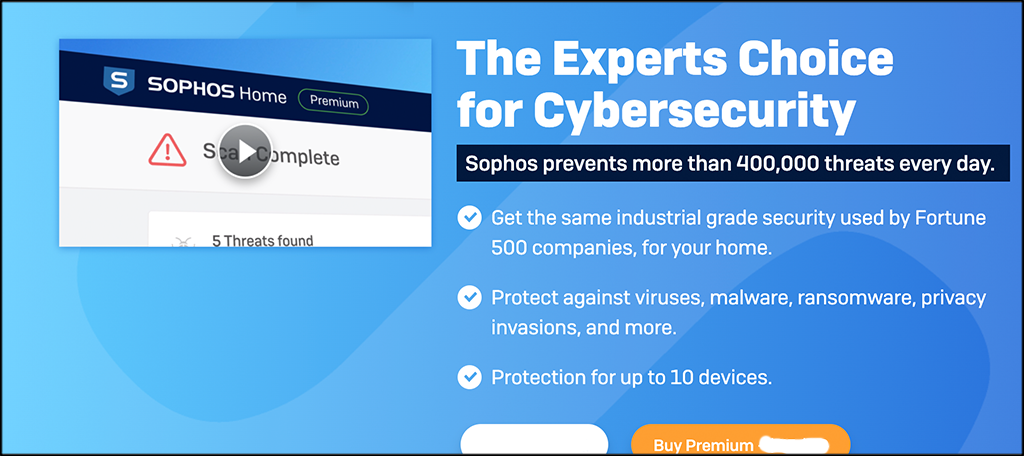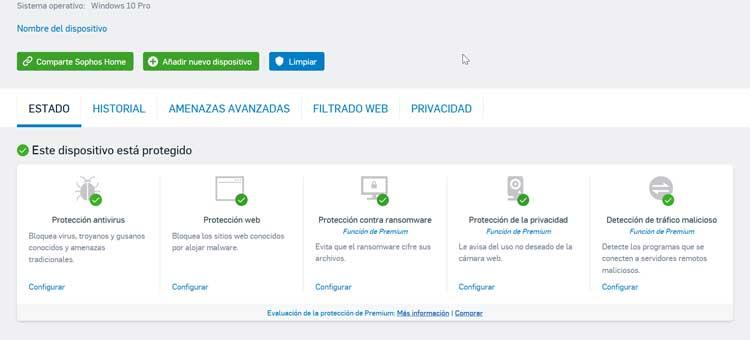
- #SOPHOSFOR WINDOWS 10 VERIFICATION#
- #SOPHOSFOR WINDOWS 10 SOFTWARE#
- #SOPHOSFOR WINDOWS 10 CODE#
- #SOPHOSFOR WINDOWS 10 FREE#
Using real viruses for testing in the real world is rather like setting fire to the dustbin in your office to see whether the smoke detector is working. You use (or should use!) a secure, controlled and independent laboratory environment within which your virus collection is maintained. However, you do not (or should not!) perform your tests in a „real“ environment. If you are an anti-virus vendor, then you do this (or should do it!) before every release of your product, in order to ensure that it really works.
#SOPHOSFOR WINDOWS 10 SOFTWARE#
Obviously, there is considerable intellectual justification for testing anti-virus software against real viruses. Your best response to a request from an unknown person is simply to decline politely.Ī third set of requests come from exactly the people you might think would be least likely to want viruses „users of anti-virus software“. They want some way of checking that they have deployed their software correctly, or of deliberately generating a „virus incident in order to test their corporate procedures, or of showing others in the organisation what they would see if they were hit by a virus“. There are relatively few laws (though some countries do have them) preventing the secure exchange of viruses between consenting individuals, though it is clearly irresponsible for you simply to make viruses available to anyone who asks. Other requests come from people you have never heard from before. Using strong encryption, you can send them what they have asked for by almost any medium (including across the Internet) without any real risk. Some requests are easy to deal with: they come from fellow-researchers whom you know well, and whom you trust. If you are active in the anti-virus research field, then you will regularly receive requests for virus samples. (read the complete text, it contains important information) It was decided not to change the file itself for backward-compatibility reasons.
#SOPHOSFOR WINDOWS 10 VERIFICATION#
The content of this documentation (title-only) was adapted 1 September 2006 to add verification of the activity of anti-malware or anti-spyware products.The definition of the file has been refined by Eddy Willems in cooperation with all vendors.This file used to be named ducklin.htm or ducklin-html.htm or similar based on its original author Paul Ducklin and was made in cooperation with CARO.Any piece of software that acts maliciously will be removed but only with your permission. The result is Sopho’s ability to monitor your programs and applications.
#SOPHOSFOR WINDOWS 10 CODE#
This prevents users from clicking on phishing websites as well as scan a website’s code to see if it has been compromised by hackers. The features mentioned above are made possible by Sophos' global database. Behavior-based detection, on the other hand, allows the program to discover and remove malware that has never been seen let alone run on your device. With signature-based detection, Sophos Home can easily find and block known malware.

It uses a combination of signature-based and behavioral-based detection. One Sophos account can be installed in three devices.
#SOPHOSFOR WINDOWS 10 FREE#
Sophos Home Free functions as an anti-virus, web filter and remote monitoring program. So, it is not necessary that Sophos-installed devices are under one roof. These devices can belong to you or to those closest to you. This user-friendly program will allow you to secure your own device or manage the security of multiple devices.

Sophos Home is a commercial antivirus that delivers real-time protection from the ransomware, malicious software and other forms of hacking. Sophos IT security software is now available for private users.


 0 kommentar(er)
0 kommentar(er)
